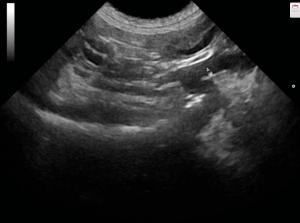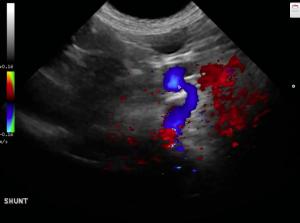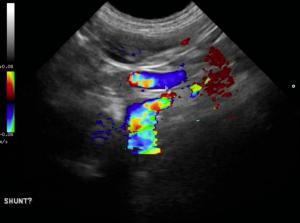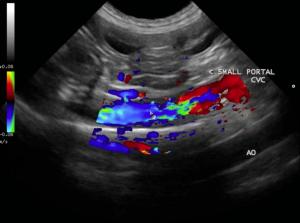Clinical Differential Diagnosis
Liver - porto-systemic shunt, primary portal vein hypoplasia, acute hepatopathy (viral, bacterial, leptospirosis, toxins), chronic-active hepatitis, neoplasia. Pancreas - pancreatitis, abscessation, neoplasia.
DX
Splenoazygos shunt. Severe microhepatica. Bladder sand.
Outcome
Ameroid constrictor placement was recommended. Concurrent portal vein
hypoplasia may also be an issue in this patient given the severe microhepatica. Concern for
potential portal hypertension post surgery. This should be monitored, ideally with intraoperative
ultrasound measuring portal vein velocities after either cellophane tie-off. Post operative portal vein
velocities were recommended one day and 5 days post surgery to ensure portal hypertension does
not develop in this case. Cystotomy for sand removal could be considered, but is a minor amount and
may flush out with fluid therapy.The owner declined surgical repair due to post op risks. Currently, the patient is stable and responding to medical management: lactulose, metronidazole, Hills l/D






Comments
This case was submitted for SonoPodcast consultation by Dr. Calin Catarig veterinarian and owner of Rosslyn Veterinary Clinic located in Edmonton, Alberta in Canada. Many thanks to Dr. Catarig for providing the patient's history and these fantastic images!